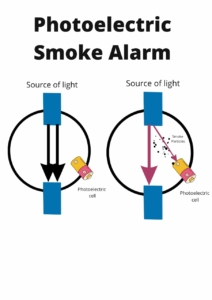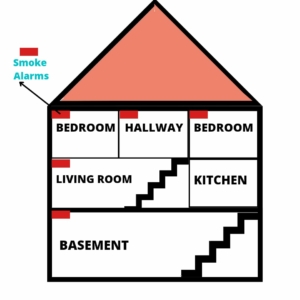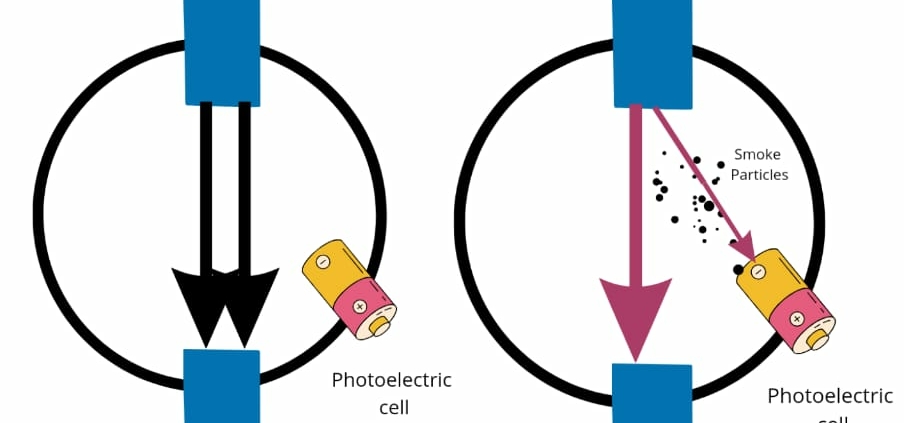Smoke Alarms

Smoke alarms are designed to detect smoke automatically and warn you of the dangers of a potential fire with a sharp, distinctive sound. All-in-one smoke alarms consist of a sensor which immediately detects smoke and an alarm which is loud enough to alert everyone.
Progression of Smoke Alarms
Smoke detectors were invented a century ago and have rapidly evolved over the decades. With continuous efforts, scientists have developed sensors, alarms, strobe lights, voice features, etc. Smoke alarms today commonly work with the utilization of a battery backup and the option to be hardwired into the electrical system of the house.
How Do Smoke Alarms Work?
Smoke alarms work by sensing dangerous smoke particles in the air that can lead to a fire. Many homes today have smoke alarms wired right into the household electrical system. In addition, some homes have interconnected smoke alarms. This means if one alarm in the home sounds then the others sound as well. Presently, the two main types of smoke alarms are photoelectric and ionization.
Photoelectric Smoke Alarm – Senses small slow smoldering flames

A photoelectric smoke alarm consists of a chamber through which light passes. Inside of this smoke alarm, there is a light beam and sensor placed at 90-degree angles from one another. If smoke enters this chamber, the light beam will be scattered by the smoke particles and will activate the sensor. These smoke alarms are capable of detecting smoke particles from small flames before they result in a major fire. Photoelectric smoke detectors are quick and less prone to false alarms. These alarms are more effective at detecting fire originates from a smoldering source, like burning wires or a lit cigarette that falls into a couch cushion. Smoldering fires may fill a home with dangerous gases before a fire ever erupts.
Ionization Smoke Alarm – Senses rapid fire flame
An ionization smoke alarm consists of two electrically charged plates within a chamber. This allows a current of ionized air to flow between the plates. When smoke is present, the flow of ions breaks, and the current flow is reduced which then activates the alarm. These alarms are generally more responsive small smoke particles produced by flaming and fast fires such as thin fabrics, paper, and kitchen grease fires.
Potential Problems and Hazards
In one quarter of the homes with smoke alarms, the smoke alarms are not operational. Missing batteries, dead batteries, and disconnected detectors are usually the culprit. When gone undetected a fire can quickly spread and become difficult to control.
Be Prepared
Have an escape plan. Smoke and flame can spread quickly so you need to react quickly. It is vital that you and your family know what to do on hearing a smoke alarm. You should plan an escape route from every area of the home and identify a safe area to meet outside the home. You should rehearse the escape plan with your family. Walk through and identify obstacles that may slow you down such as windows that are jammed or exits that are crowded with storage etc.
Advised Maintenance
- Smoke alarms come with an ideal life span of 10 years, but this does not mean that you should rest assured they work smoothly.
- The battery should be checked annually.
- Performing power tests once a month can ensure sound and sensor are working.
- The new battery should be replaced according to the manufacturer recommendation.
- Clean the smoke alarms using a damp cloth and remove any dust nearby.
Smoke Alarm Installation Tips
- It is good practice to install smoke alarms 10 feet away from the kitchen.
- Install smoke alarms in every room and every floor for the best safety.
- You should install smoke alarms on the ceiling.
- Always consider an expert to install the hardwired system for interconnected smoke alarms and manually check it regularly.
- You can install a combination of photoelectric and ionization smoke alarms for added safety.
- Consider installing smoke alarms with strobe lights or vibration for anyone who is hearing impaired.





